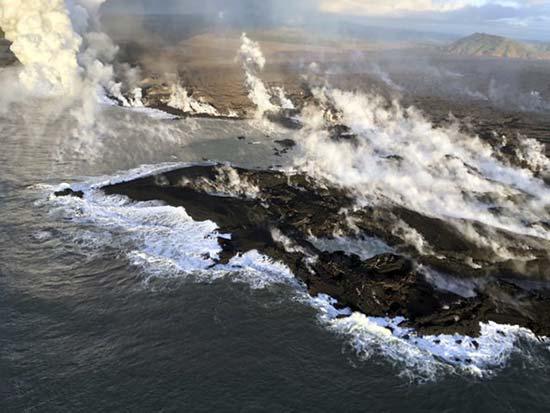Vog vs. laze: What's the difference and why are they so dangerous?

Two buzzwords associated with the air quality impacts of volcanic activity are "vog" and "laze" - but what is the difference, and what do they mean?
Whether volcanic activity occurs in a single eruption or is spread out over the course of weeks or even months, residents of the impacted areas will likely deal with at least one of these air quality hazards.
Vog, which is short for volcanic smog, is a hazy form of air pollution emitted by volcanoes. It is primarily composed of water vapor, carbon dioxide and sulfur dioxide, and according to the International Volcanic Health Hazard Network, it often smells like fireworks or a struck match.

According to Dr. Elizabeth Tam, a pulmonologist and chair of medicine at the University of Hawaii John A. Burns School of Medicine, the presence of vog has not been found to trigger new cases of asthma. However, this haze does exacerbate dangerous asthma symptoms for those who already suffer from the respiratory illness, even during short-term exposure.
Often times, vog is also mixed with smoke from structures burned by lava in the area, which has been known to cause eye, nose, throat and skin irritation as well as shortness of breath. Prolonged exposure to smokey haze can in fact lead to new cases of asthma.
“You not only have vog, you have smoke, and when homes burn, there are plastics and all kinds of things,”said Tam.
“It’s a toxic mix that is much more than just the volcanic emissions.”
Laze, on the other hand, is not directly produced by a volcano. This lava haze is a dangerous cloud of steam that forms when scorching lava comes in contact with water, usually when it spills into the ocean.
This dense white steam looks relatively harmless, but is composed of hot water vapor as well as toxic gases (such as hydrochloric acid) and tiny shards of volcanic glass.
These glass shards are created by water-cooled lava, known as Pele's Seaweed, that can be small enough to be lifted by the cloud and harm anyone who breathes it in.
According to Janet Babb, a geologist with the Hawaiian Volcano Observatory, laze itself is not hot enough to cause burns unless one is standing directly over the source.
Babb said protective masks distributed by officials can protect wearers from volcanic ash and airborne microscopic glass particles in laze, but not from the hydrochloric acid.

